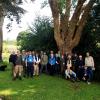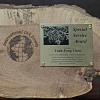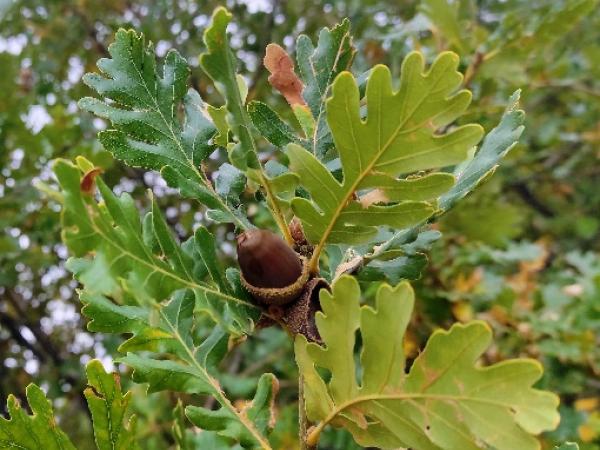Editor's Picks
Plant Focus
Joeri Sergej Strijk
Published May 2018 in International Oaks No. 29: 77–90
Abstract
Hong Kong represents an intriguing example of how topography, climate and evolutionary time can combine to create a highly diverse array of environmental conditions on a small geographic scale. Located on the edge of continental Asia, it consists of pieces of mainland, islands and peninsula that were once home to warm forests with elephants, tigers and rhinoceros. Today it holds one of Asia’s megacities with a population of 7.4 million people, yet more than half of its surface area has been designated as protected green zones. These country parks, watershed reservoirs and protected upland areas hold the last populations of Hong Kong’s oak species (in addition to 24 other Fagaceae), as well as a rich and varied flora and fauna. Here I provide a brief overview of the history of Hong Kong’s forests, its oaks and the efforts currently underway to secure their survival. Finally, I present a newly recorded oak species for Hong Kong, bringing the total number of species found to 14.
Keywords
Quercus, Fagaceae, Hong Kong, China, mountains, microhabitat, population reduction, conservation, urbanization
References
Agriculture, Fisheries and Conservation Department (AFCD). 2012. Check List of Hong Kong Plants. Hong Kong: Hong Kong Government.
Chong, K.Y., H.T.W. Tan, and R.T. Corlett. 2009. A checklist of the total vascular plant flora of Singapore: native, naturalised and cultivated species. Singapore: Raffles Museum of Biodiversity Research and National University of Singapore.
Corlett, R.T. 1992. The Naturalized Flora of Hong Kong: A Comparison with Singapore. Journal of Biogeography 19(4): 421-430 doi.org/10.2307/2845570.
Corlett, R.T. 1999. Environmental forestry in Hong Kong: 1871-1997. Forest Ecology and Management 116(1–3): 93–105 doi.org/10.1016/S0378-1127(98)00443-5.
Dudgeon, D., and R.T. Corlett, R. 2004. The ecology and biodiversity of Hong Kong. Hong Kong: Friends of the Country parks.
Department of Environmental Resources Management. 2008. 2008 Update of Terrestrial Habitat Mapping and Ranking Based on Conservation Value. Hong Kong: Hong Kong SAR Government.
Hau, C.H., D. Dudgeon and R.T. Corlett. 2005. Beyond Singapore: Hong Kong and Asian biodiversity. TREE 20(2): 281-282.
Oldfield, S., and A. Eastwood. 2007. The Red List of Oaks. Cambridge, UK: Fauna and Flora International.
Phengklai, C. 1992. Fagaceae. In Flora of Thailand Vol.9 (3) edited by T. Smitinand and K. Larsen. Bangkok: Royal Forest Department.
Shum, T.-W. 2015. The status of natural succession in lowland secondary forests of Hong Kong. Hong Kong SAR: University of Hong Kong, Pokfulam. https://doi.org/http://dx.doi.org/10.5353/th_b5674079
Soepadmo, E., and C. van Steenis, 1972. Fagaceae. Flora Malesiana-Series 1, Spermatophyta 7(1): 265–403.
Strijk, J.S. Forthcoming a. Flora of Cambodia, Laos and Vietnam – Fagaceae.. Edinburgh & Paris: Royal Botanic Garden Edinburgh and the Muséum national d’Histoire naturelle.
Strijk, J.S. Forthcoming b. Flora of Singapore – Fagaceae. Singapore: Singapore Botanical Garden.
Strijk, J.S. 2016. ASIANFAGACEAE.COM – The Complete Database for Information on the Evolutionary History, Diversity, Identification and Conservation of Over 700 Species of Asian Trees.
Trehane, P. 2007. The Oak Name Checklist. www.oaknames.org.
World Checklist of Selected Plant Families. wcsp.science.kew.org.
Wu, Z.Y., and P.H. Raven. 1999. Flora of China. Vol. 4. Cycadaceae through Fagaceae. St. Louis: Missouri Botanical Garden and Beijing, China: Science Press.















